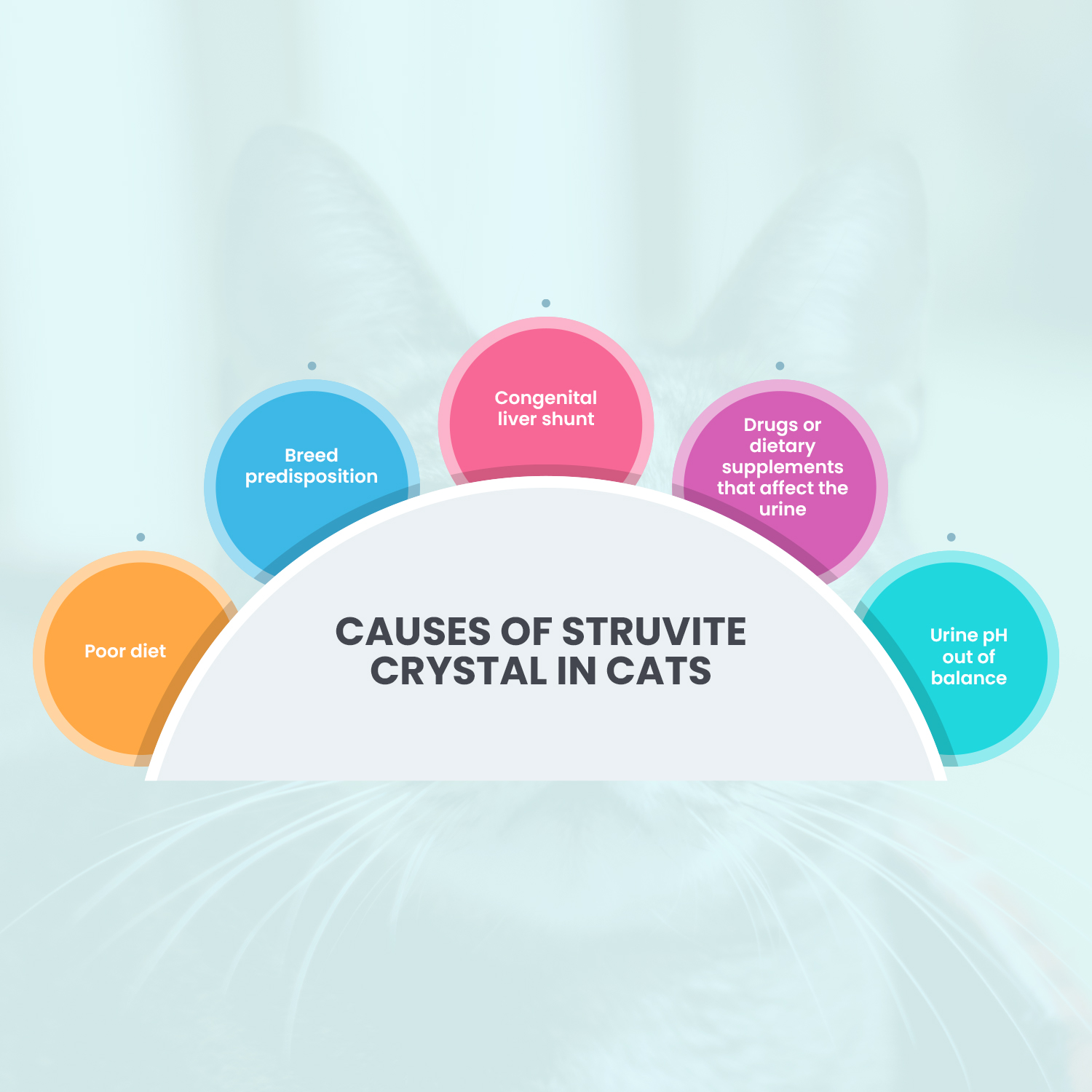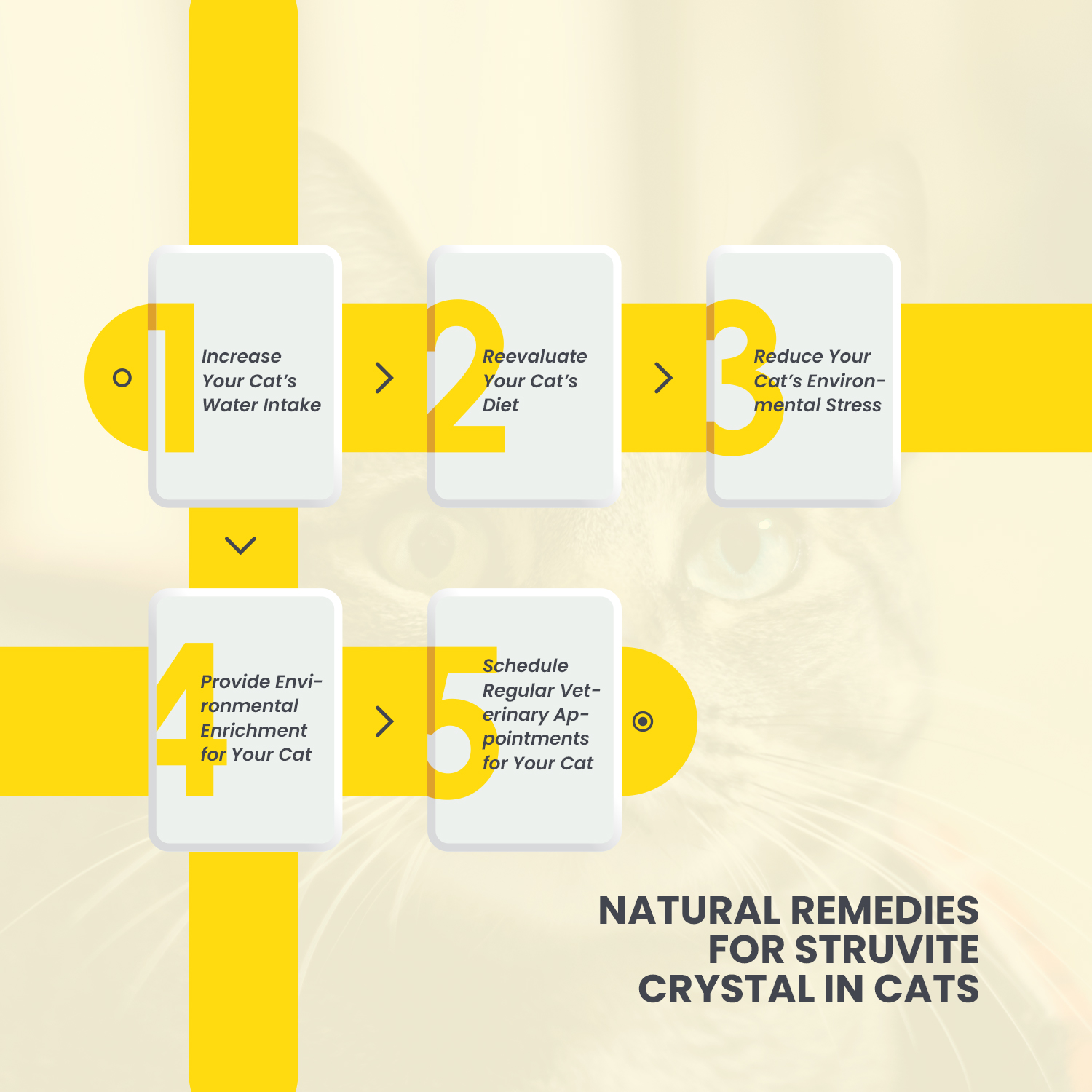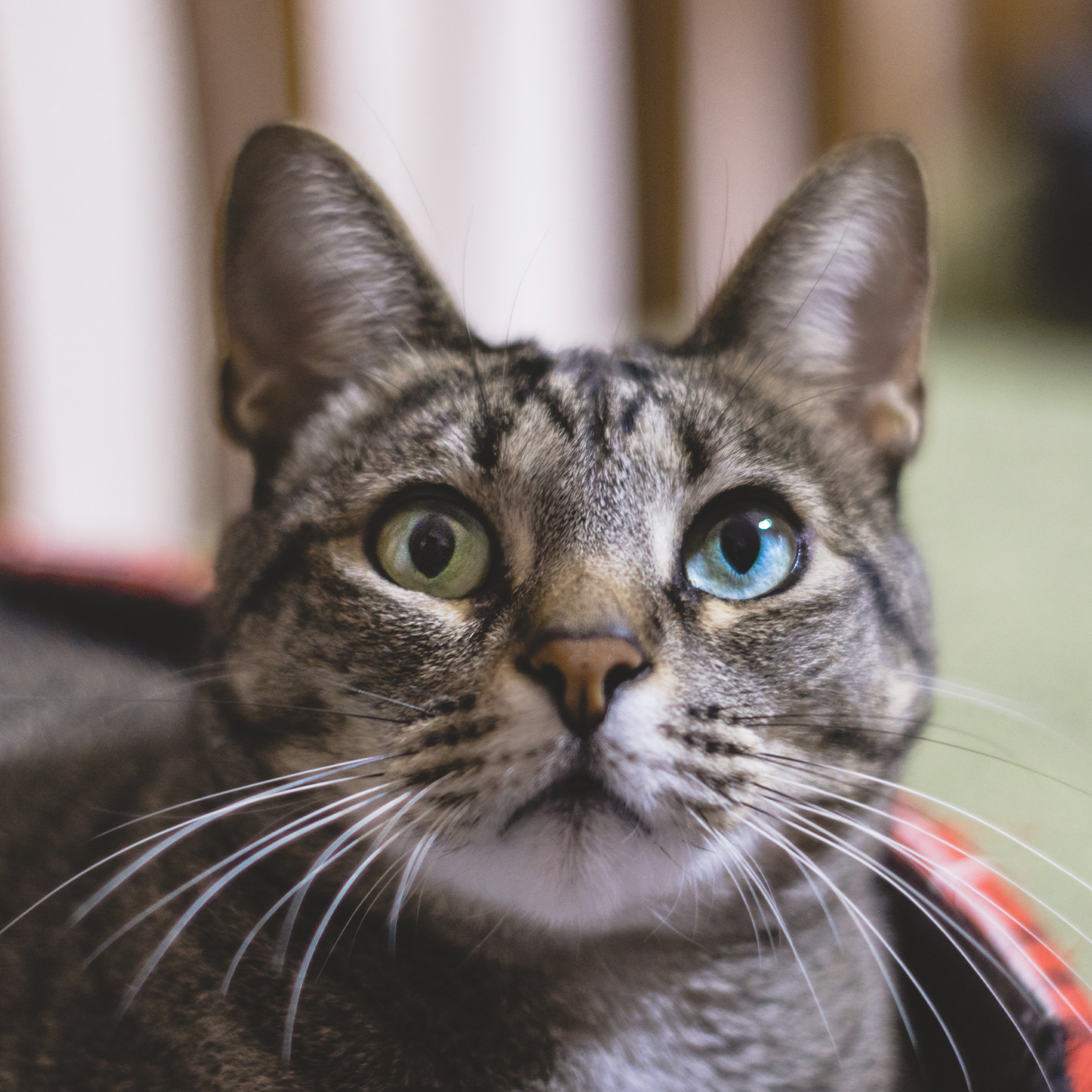Struvite crystals are the most common bladder stones in cats, including dogs. At least 50 percent of all bladder stones in cats are struvite, and these struvites are responsible for more than 30 percent of stones in dogs. While the condition often begins with a bladder infection in dogs, it does not happen that way with cats, but still, cats suffer from bladder stones. Thankfully, however, there are proven, natural remedies for struvite crystal in cats that you can try anytime your pet suffers from this condition.
Table of Contents
You will learn the following from this post:
- Meaning of struvite crystals
- Symptoms of struvite chrystals
- Causes of struvite crystals
- Diagnosing struvite crystals
- Natural remedies for struvite crystals in cats
What are Struvite Crystals?
Struvite crystals are tiny and microscopic crystals found in some cats’ urine. Struvite is specifically a material composed of phosphate, ammonium, and magnesium. Both struvite and struvite crystals can be typical in your cat’s urine at a low level. However, the condition becomes problematic when the crystals combine to form stones or grits of varying sizes and shapes. These stones are often in the urinary bladder, the kidney, or the urethra. You can dissolve or flush the stone out of your pet’s body in some cases. However, natural remedies for struvite crystal in cats will provide you with better results.
Symptoms of Struvite Crystals in Cats
In many cases, struvite stones can cause irritation and painful inflammation to the bladder wall, and it can result in a life-threatening emergency, such as urinary blockage where your cat produces very little or no urine. Unfortunately, some symptoms may not show in some cats immediately, or the cats display minimal signs that the veterinary can only discover when performing tests for another condition.
The symptoms of struvite crystal in cats include the following:
- Chronic cystitis/infections
- Not eating or decreased appetite
- Lethargy
- Excessive licking and grooming of the genital area
- Restlessness
- Change in odor or color of urine/bloody urine
- Vocalizing or straining while urinating
- Frequent trips to the litterbox
- Increased or decreased urination
- Urinating little amounts of urine
- Urinating outside the litterbox
Causes of Struvite Crystal in Cats

Causes of Struvite Crystal in Cats
Struvite crystals form in some cats due to urinary tract infection, but this condition is less common in cats than in dogs. In most cases, cats develop struvite crystals even without an infection. In these cases, however, no one knows the exact cause. However, various factors contribute to these crystals, including the formation of concentrated urine, alkaline urine (increased pH of the urine), and increased phosphorus and magnesium levels in the urine.
An underlying cause for struvite stones’ development is that many cats do not like drinking water from bowls. They have evolved over thousands of years to get most of their moisture from prey. This, in association with a diet of dry cat food, can lead to the development of crystals in the cat’s urine.
In addition to the information already provided, some causes of struvite crystal in cats may include the following:
- Poor diet
- Breed predisposition
- Congenital liver shunt
- Drugs or dietary supplements that affect the urine
- Urine pH out of balance
Diagnosing Struvite Crystal in Cats
If you notice or discover any of the symptoms already mentioned above, the best course of action is to contact your veterinarian immediately. At your veterinarian visit, your vet will perform some diagnostics and an examination to rule out the known causes of struvite crystals and form a diagnosis. These examinations and diagnostics include:
- History: With the help of a veterinary technician, your veterinarian will be able to obtain a history of your cat. This will include any changes to the environment, your cat’s behavior, cat’s schedule and routine, and the vet will want to know any other symptoms you have noticed at home.
- Physical Examination: Your vet will perform a physical examination of your cat.
- Urinalysis and Bloodwork: By obtaining and running a urinalysis and bloodwork on your cat, your veterinarian will be able to see how your pet’s internal organs function, including checking for infection, bladder inflammation, and dehydration.
- Urine Susceptibility and Culture: Your vet should ideally obtain a urinalysis sample via cystocentesis (a procedure where the vet places a needle into the urinary bladder through the abdominal wall) and then removes a sample of urine). A urine culture test is a way of finding out the specific bacteria causing a urinary tract infection. This test involves placing a urine sample on a special medium, incubating the sample so that the bacteria can develop, and then identifying the bacteria. Finally, a sensitivity test is a second test conducted to determine the most effective antibiotics against the bacteria.
- Ultrasound and X-Rays: The vet will carry out an x-ray or ultrasound to assess if the bladder appears abnormal or houses some bladder stones. Radiographs are the most effective manner of diagnosing bladder stones (including struvite crystals) because most of them are visible under radiography. On radiographs, struvite stones typically resemble smooth pebbles or rocks within the bladder. The vet can also use ultrasound to visualize the bladder stones.
5 Natural Remedies for Struvite Crystal in Cats

5 Natural Remedies for Struvite Crystal in Cats
Cats notoriously suffer from urine problems. Urethral obstruction, chronic bladder inflammation, and kidney disease are common medical conditions felines suffer. As a result, many owners want to find out how they can maintain the urinary health of their cats. Whether your cat has a history of urinary trouble that involves struvite crystals, or you hope to prevent your cat from having this condition before it develops in them, then the following tips serve as effective natural remedies for struvite crystal in cats.
1. Increase Your Cat’s Water Intake
It is easy to use water to dilute minerals, toxins, and urinary irritants that may lead to a problem in your cat. However, concentrated urine can easily form urinary stones and crystals, and irritants can lead to a chronic bladder infection. Therefore, one of the most important ways of keeping your cat’s urinary tract healthy is by increasing their water intake. More water also means your cat will remain hydrated and pass more urine that will flush out toxins and maintain kidney function.
You can incorporate these ideas into your cat’s daily routine to increase water intake:
- Freshwater: Cats enjoy freshwater, and your cat will most likely drink more water if you clean and fill her water bowl every day.
- Canned food: Canned foods contain more water than dry varieties, and feeding your cat with wet food is a straightforward approach to incorporating more water into your cat’s daily diet.
- Flavored water: Adding sodium-free chicken or tuna juice can tempt your cat to use her water bowl more.
- Fountains: Most cats love running water, and so a battery-powered fountain may be more interesting than your cat’s regular water bowl.
2. Reevaluate Your Cat’s Diet
Your cat may benefit from one of the available urinary diets if she has had previous urinary health challenges. The diets contain specific amounts of protein, minerals, and bladder protectants to help maintain a healthy urinary tract. However, urinary diets contain limited amounts of minerals, such as calcium, phosphorus, and magnesium, contributing to stone formation and urinary crystals. These diets can make your cat’s urine slight acidic due to their formation, and the acidity discourages crystal formation. In addition, some diets contain glycosaminoglycans, which naturally defends the bladder lining.
Talk to your veterinary doctor before switching your cat’s diet. Many urinary diets are available, and your vet can help you choose an appropriate one for your cat’s needs. Your vet can also counsel you about gradually changing your cat’s interest to a new food so that she will accept it. Because cats are creatures of habit, they do not easily adapt to sudden switches.
3. Reduce Your Cat’s Environmental Stress
Most felines are sensitive to environmental stressors associated with inappropriate elimination and feline lower urinary tract disease – a condition responsible for chronic bladder inflammation. As a result, affected cats suffer from bladder pain, and they suffer the risk of developing urethral obstruction that may threaten their lives. In addition, environmental changes, such as a new baby or roommate, a different litter brand, or a new pet, can trigger internalized stress that becomes urinary problems.
Eliminating stressors and providing an escape when your cat is anxious or fearful can keep her urinary tract healthy. You can therefore try the stress-reducing tactics below:
- Scoop litter daily: Some cats hate a dirty litter box and refuse to use the soiled litter, so keep your cat’s box very clean.
- Do not change litter brand: Cats can be picky about their litter, and so if you suddenly switch her litter box brand, she may choose to use your floor instead.
- Provide a refuge: your cat will appreciate having her own space, especially if you have rowdy children and other pets in the house, or she is simply timid and prefers time alone. Choose a tidy and quiet, low-traffic area of your home and provide that space with everything your cat may need, such as toys, a perch, a scratching post, and food and water bowls. This will serve as a place she can de-stress when she feels the need.
- Include feline pheromones: Some products contain feline pheromones that encourage calmness and reduce stress in cats. You can also add a diffuser to areas of the home where your cat spends most of her time and then spray her bedding and blanket with the pheromones to provide her with better comfort. You can also spray house guests with these pheromones so that new introductions can be less stressful.
4. Provide Environmental Enrichment for Your Cat
The safest life for your cat is an indoor life. However, a bored cat may develop stress-related urinary conditions. In addition, cats are natural predators; they have very active instincts, so sitting alone all the time is not suitable for them, even though they enjoy sleeping – and that often comes because they are bored. Therefore, your cat will be more active with interaction and toys that bring out her inner lioness, such as:
- Perches: Cats enjoy watching household activities from the top, and an elevated perch, such as a cat tree, can provide your cat with hours of entertainment. She may also love a window perch where she can observe the squirrels and birds in your backyard.
- Videos: videos of birds flying or mice scurrying can keep your bored cat entertained while you are working or busy with household chores.
- Food puzzles: Cats hunt their food in the wild. Therefore, making your cat work for her food will appeal to her primitive side, and the added exercise required in the hunt will make her remain fit. You can purchase food puzzles for hiding food, or you can hide pieces of food around the house and let your cat sniff them out.
- Moving toys: Your cat may enjoy chasing battery-operated insects or toy mice moving around the house. A feather on a string can as well keep her entertained and moving.
5. Schedule Regular Veterinary Appointments for Your Cat
Cats require regular veterinary attention and care, and your family veterinarian can discover signs of underlying urinary conditions during your cat’s regular wellness visit. Cats above eight years old should see a veterinarian more frequently to maintain good health. Your vet can perform a urinalysis during each visit to analyze your cat’s urine for signs of infection, kidney dysfunction, and inflammation. Blood work will evaluate your cat’s kidney function and detect kidney failure, one of the leading causes of death in cats.
Final Thoughts
With careful methods, procedures, and activities, you can manage and prevent struvite crystals in your cat. Your cat should be back to her old self after following the natural remedies for struvite crystal in cats already mentioned above. However, suppose you notice that your pet may be suffering from a urinary tract problem (as mentioned in the symptoms above). In that case, especially if they seem uncomfortable or straining to urinate, the best option is to seek veterinary attention before engaging in any natural remedies for struvite crystal in cats.
Post Disclaimer
The information contained in this post "Top 5 Natural Remedies for Struvite Crystal in Cats" is for educational purposes only. Always consult your primary care doctor before using the remedies that are provided. The information is provided by The Hidden Cures and while we do timely, in-depth research on the information that we provide to you, everything stated may not be up to date or accurate from the time it was written.
